Creative food photography ideas to inspire you.
They say: “You eat with your eyes first”. Food photography is so much more than just whipping out your iPhone at dinner to capture that perfectly vibrant salad. Truly beautiful food photography is not only visually appealing, but it also evokes your sense of smell and taste, and memory.
Food photographers have to work hard to capture the right angles, colors, shadows, and textures when shooting. Otherwise, it doesn’t matter how amazing the food might actually taste; if it doesn’t look good, we’re going to be much less inclined to eat it.
If you’re interested in food photography and you need some creative food photography ideas to get you started on your journey, listen up. We’ve got all the best food photography ideas headed your way.
14-day free trial. No credit card required.
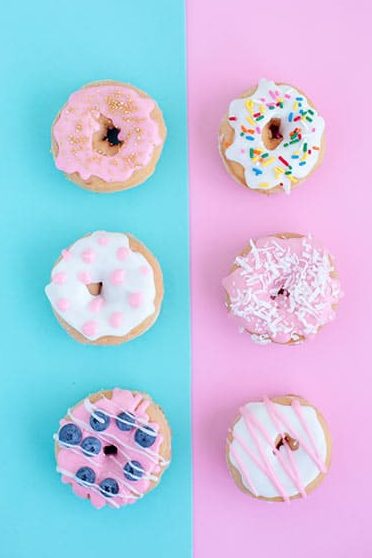
Push the boundaries.
Sure, you can stand above a plate and snap a pic of your food, but any food photographer worth their salt is going to know that this approach may not be the best approach to yield the best results.
Instead, we encourage you to push the boundaries when photographing food. Get into creative positions, play with different compositions, don’t be afraid to experiment with new techniques, and, when in doubt, use some of these ideas to get the ball rolling.
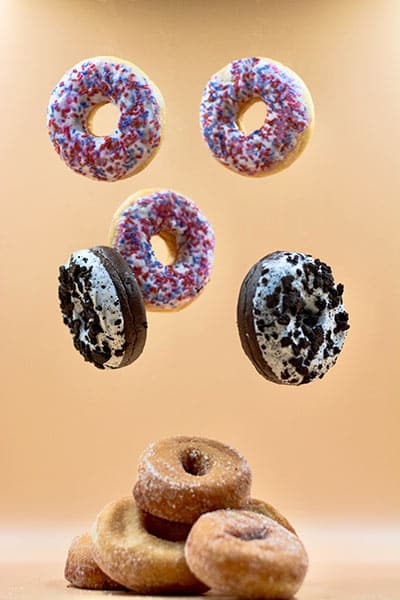
Food levitation photography.
Also known as floating and flying food photography, don’t limit yourself to thinking that your food has to remain stagnant during your photoshoot. That’s right, taking your food off the plate, deconstructing it, and giving it some movement could be exactly what’s on today’s menu.
This kind of food photography can be very complicated, involving a team of people assisting you, and multiple frames to capture each element of the dish that will have to be edited together into a composite image later.
Keep in mind, this doesn’t mean you have to make an incredibly elaborate setup or even throw food across the room to achieve the flying food effect. Instead, floating food photography could simply mean sprinkling seasoning onto food, or squeezing lemon juice onto a dish and capturing that motion.
If you’re struggling to capture the motion without blur make sure you familiarize yourself with camera settings to achieve the look you want. And don’t forget about the power of post-production editing.
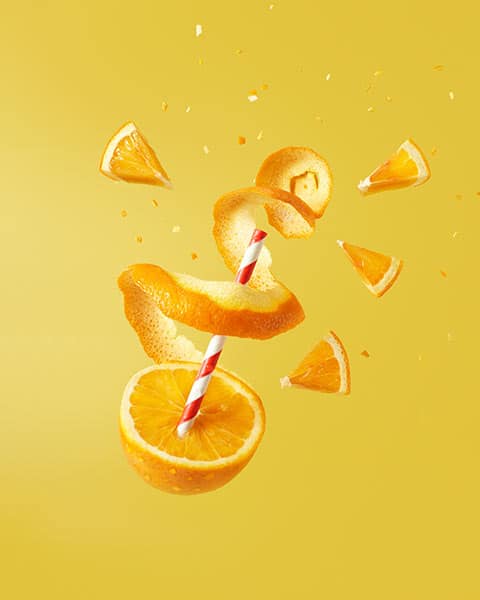
Conceptual food photography.
Essentially, if you’re photographing food in a setting or manner in which we wouldn’t normally eat it in real life, then you’re probably playing with some form of conceptual food photography.
Conceptual food photography is quite a broad term, which is why it can encompass so many different styles of food photography. Primarily, conceptual food photography picks some sort of idea or concept that you want to convey and then uses food items to portray it.
For instance, photographing the ingredients of a cake rather than a fully baked cake itself. Or, we can focus on viewing food items through lenses that we wouldn’t normally have access to. For instance, a cross-section of a soup bowl that shows the soup from the side without the entire bowl containing it.
Not too surprisingly, conceptual food photography can rely quite heavily on post-production editing.
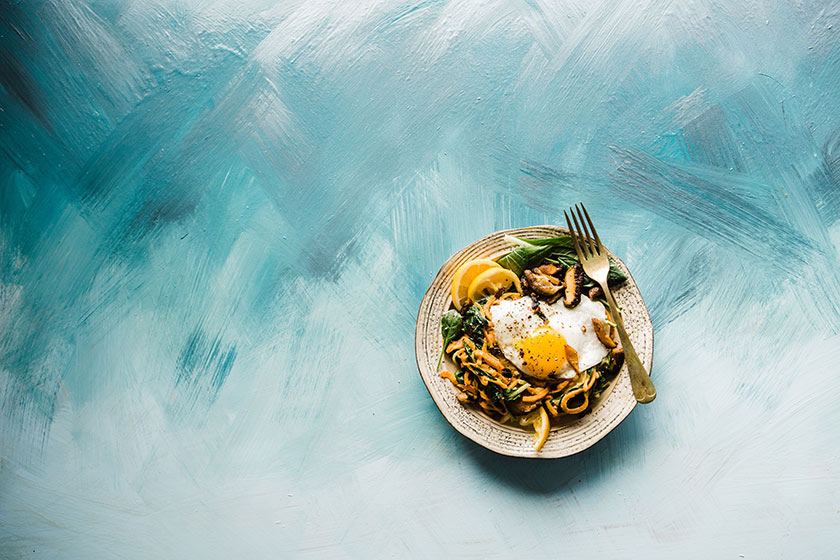
Negative space food photography.
Negative space food photography is all about considering the space around the food. You will have a primary dish, but you will also consider the space around the dish to make the image more interesting visually. This can be achieved by playing around with composition and lighting to make it more enticing while using the negative space to elevate what you’re communicating with that image.
Keep in mind that balance is incredibly important when considering negative space in food photography. Too much negative space and your image could look boring and a little too minimalist, and empty. On the other end, if you add too many props and additional food items around the dish, you will likely lose the main focus entirely.
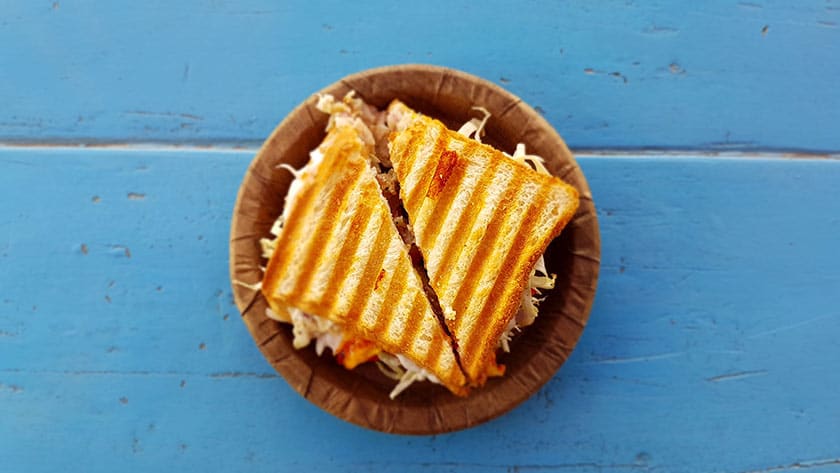
Minimalist food photography.
It doesn’t take an expert to know what this idea entails, but it can be challenging to strike a balance to make sure the minimalist aesthetic is working to your benefit. And in case you are struggling with taking food photos that feel a little too cluttered and busy, let’s take a step back and chat about minimalist food photography.
All about letting the food be the star of the image, minimalist food photography avoids the excessive use of props and other distracting elements. Instead, you’ll likely find that a neutral backdrop is used, as well as neutral dishware. You also might notice more natural elements worked into the photo like wood and metals.
Keep in mind, just because minimalist food photography doesn’t use excessive props or colors doesn’t mean the photos are boring. Instead, with this photography idea, focus on textures to help add visual interest.
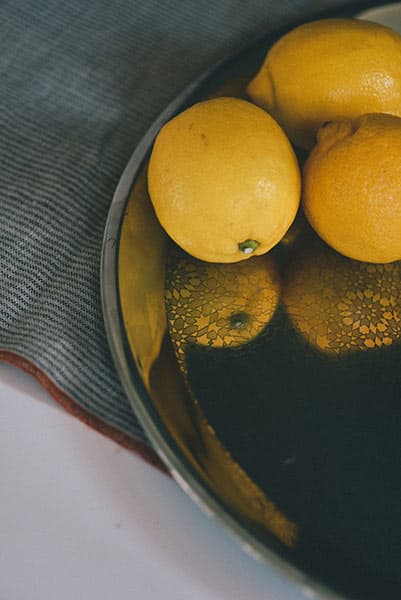
Food still life photography.
Still life photography generally focuses on inanimate objects or commonplace items like vases, plants, shells, clothing, and yes, food.
Try finding inspiration from still life paintings from the masters in art history. Use food as the vehicle to create beautiful still life scenes. Think about the direction of the light, the composition, and how each of the elements in your scene are interacting with each other. You can also start incorporating still life food photography into your work by focusing on single ingredients rather than fully plated meals or constructed scenes. For instance, a bowl of fruit or a plate of cheese.
When executed with intention, these ideas can have a big impact, especially when you carefully consider the placement and styling of the shot.
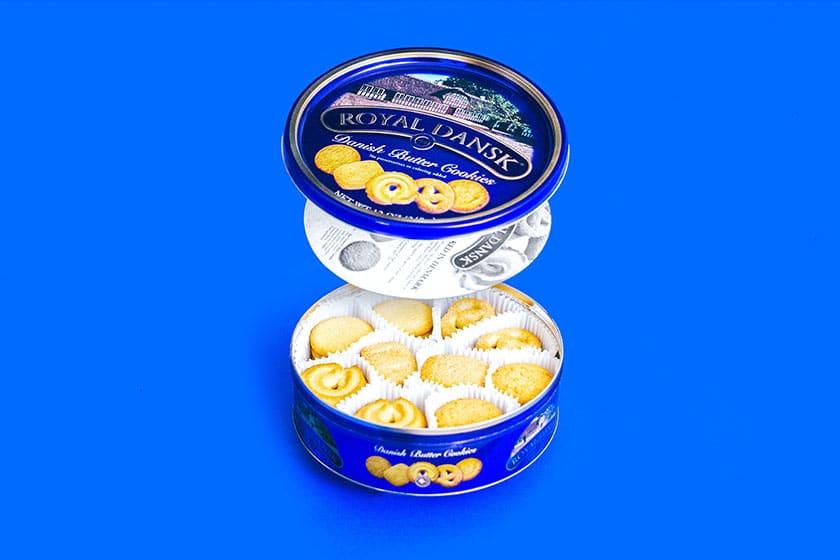
Food packaging photography.
Did you know that food photography doesn’t just have to be about plated meals and single-ingredient photos? Food photography can also encompass the photography shown on a packaged food label. Or the product photography of a packaged food product.
For instance, that granola bar that you buy every week at the grocery store, more than likely, there is an image of the granola bar on the outside of the box. Or what about that favorite canned soup that showcases the soup on the outside of the package?
If this doesn’t appeal to you, you’ll also often find that packaged foods are shot for marketing materials. For instance, if that granola bar comes in multiple flavors, you might need to shoot an image that incorporates all 5 flavors into one image.
There is a lot of room to play if this is a food photography idea you want to implement. Keep in mind that there will likely be added restrictions from your client with this kind of photography. You will likely need to adhere to guidelines about the packaging, as well as possible regional regulations about how food can be depicted on packaging.
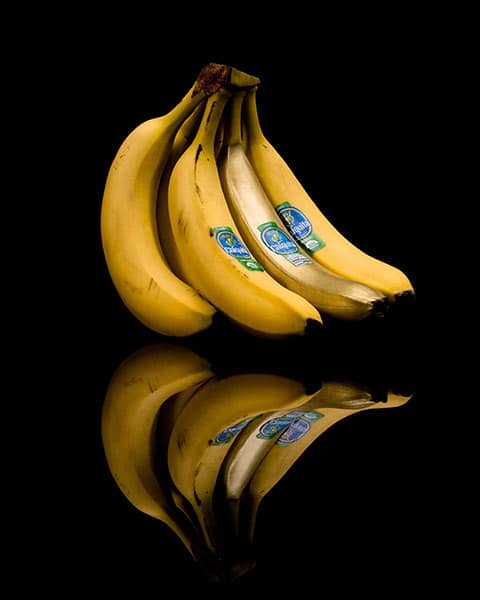
Reflective food photography.
One easy way to give your food photography a more elevated edge is to add a reflective surface to the image. It doesn’t necessarily have to be a mirror, but just the addition of something reflective will help with visual interest.
For instance, try using plexiglass when deciding on what surface to place your food items on. It helps to add a sleek and modern aesthetic to the final image.
If you want to take it a step further and give your image an even more modern feel, try adding kitchen gadgets to the image. For instance, a sleek coffee maker or a stainless steel toaster could do the trick.
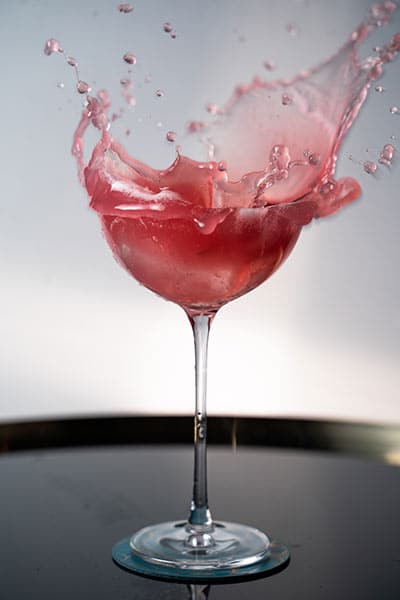
Incorporate a splash with food photography.
Soups, stews, and especially drinks like coffee, smoothies, and cocktails could all benefit from a little splash in the image.
That’s right, this idea might be a little messy, but it can add creativity, dimension, and movement to your image without having to get too wild. Simply put your camera into a continuous shooting mode and be sure to start capturing the image before you create the splash.
The result will be an image that feels much more dynamic and interesting than if the image was just of a drink on a bar or a soup on a table.
As we mentioned in food levitation photography, it may also work to your benefit to shoot the splash several times, and in post-production isolate various parts of the splash and create a composite for a more intriguing, dynamic, and controlled look.
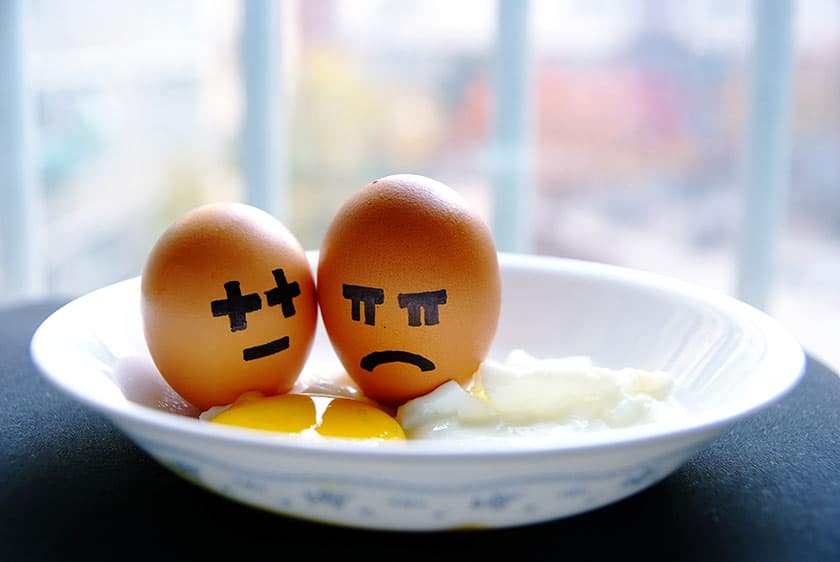
Be silly with food photography.
When you think of food photography, you probably don’t think of comedy, but here’s the thing about photography: You can have fun and get silly with almost any style.
With food, you will likely be adding props and weird/interesting items into the image to convey that silly factor. For instance, look at items around your house that have nothing to do with food and see if you can think of quirky ways to add them to the image.
Of course, you don’t want this to be so random that the prop has no relation to the food, but if you get creative here, you could come up with an entirely original idea that gets people talking.
If you include people in the scene so it’s more of a food lifestyle image you can also play with the behaviors and expressions of the models.
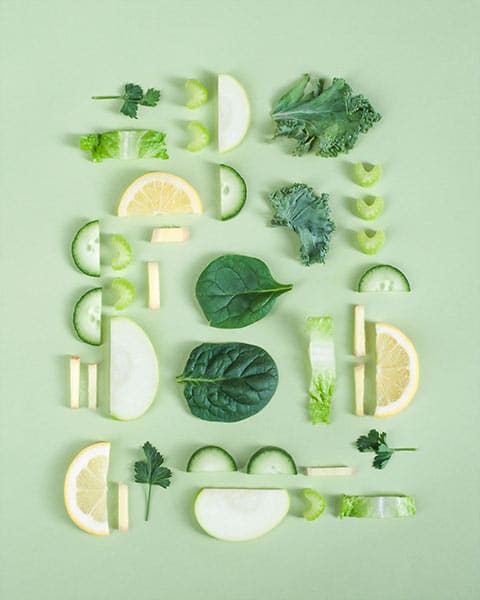
Try out the traditional flat lay.
While we strongly encourage you to push boundaries when it comes to your food photography, in some cases, going back to your roots and staying on a more traditional path might benefit you. In particular, we love a good food flat lay for this.
Simple in nature, you can incorporate this style when you really want to let the food shine. Arrange the food in an appealing way, place your dish close to window light, or another diffused light source, and shoot from above. Food photography is all about making the food look as appealing as possible. This might mean styling your bird’s-eye-view scene by adding extra details around the dish, like fresh herbs to entrees and icing to desserts. Including extra styling elements could make all the difference in your imagery.
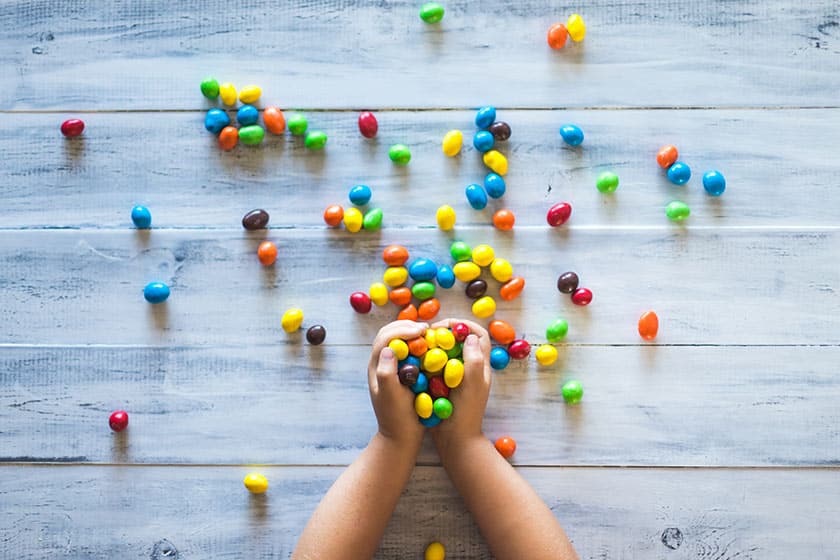
Incorporate people into your food photography.
Sure, the food is supposed to be the star of the show in food photography, but that doesn’t mean you can’t bring in a human element to your photos.
You can photograph people around a table enjoying food, but you can also simply use body parts to help bring in the human element. For instance, a hand holding a spoon drizzling cream over a warm caramel apple pie, or perhaps even just a person sitting at a table of food shown in the background of the image.
However you wish to incorporate people, don’t feel like there is any rule that says humans aren’t allowed in food photography. The whole point of food is to nourish us and to be enjoyed. What better way to capture our relationship with food than by including people in the scene, enjoying a tasty bite, and forming a community with each other?
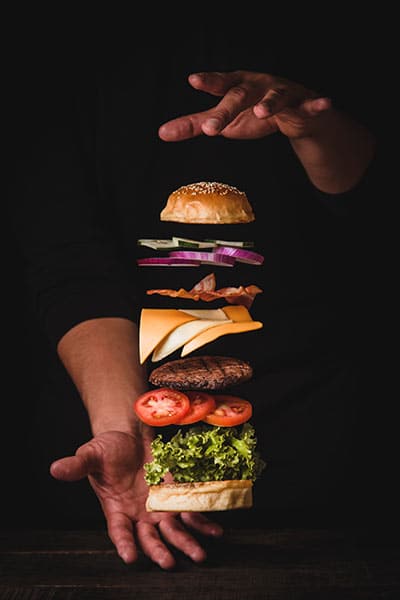
Play with deconstruction.
As photographers, the natural inclination is to make your images as beautiful as possible, and while we certainly don’t want to say there is anything wrong with that, we also want to let you know that you can take an entirely different approach to your food photography. In particular, we highly recommend experimenting with deconstruction.
Essentially, deconstruction is all about photographing individual elements in a dish separately. For instance, with a burger, rather than photographing the perfect burger with a beef patty between two buns, we photograph the beef, bun, lettuce, tomato, onion, and pickle all separately, and then we bring it all together in one image.
While it might not be traditional, it certainly gives a different look and feel to your images.
Another approach is to show a spread, such as a holiday dinner table, where the meal is in progress or the food has already been eaten. By showing food in it’s consumed, destroyed, and already-enjoyed state, you can create a narrative around the food.
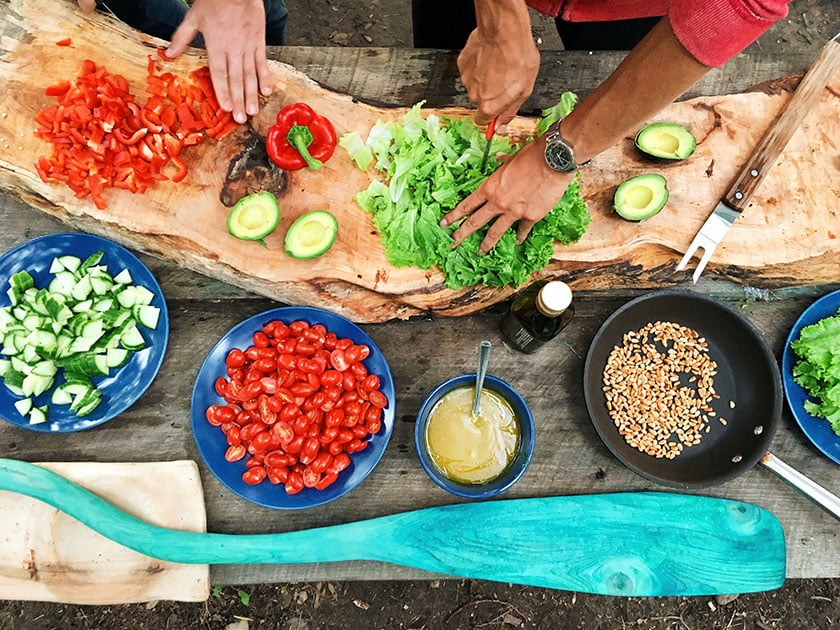
What about showing the cooking process?
While we’re on the subject of playing with the individual ingredients used in a recipe, why not try photographing the actual cooking process? For instance, you can show a cake baking in the oven, or a pan of pasta bubbling on the stovetop.
Alternatively, you can get even earlier into the cooking process by showing vegetables being chopped up for a salad or a pan of onions being sauteed for a chili dish. Regardless, this is a fun way to showcase food photography with an element of cooking mixed in. This is also a great way to showcase a chef and the ingredients that have been chosen.
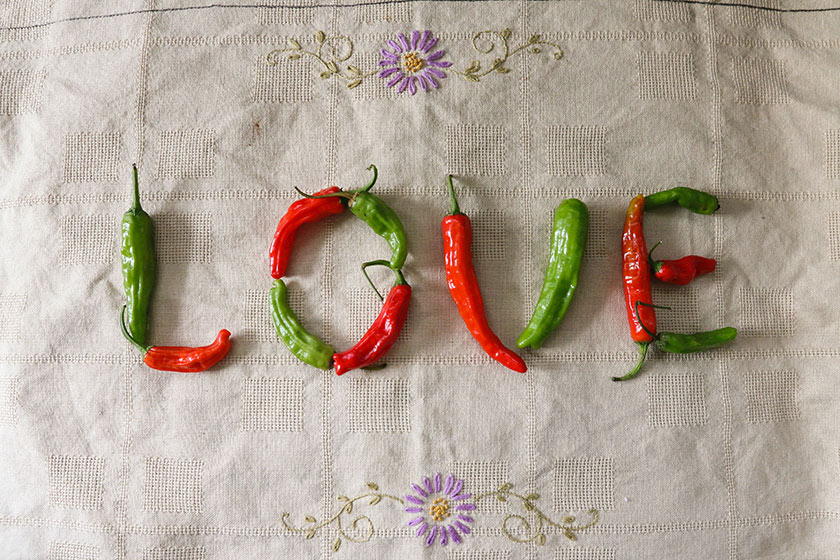
Get a message across.
While, as photographers, we strive to convey a message with every image, in this instance, we’re talking quite literally. We want you to try spelling out messages using actual food ingredients. For instance, maybe it’s the word “yummy” spelled out with ketchup next to a plate of fries. You can even find foods that already look like letters. For instance, a carrot makes for the perfect “I” while a potato could easily be an “O.”
You don’t have to have a deep message or spell out an entire sentence, but just simply playing with food items in this way is a great option for bringing something new and exciting to your work.
Create a foodscape.
Similar to using food items to spell out words, you can also use food to create scenes.
In this case, the image becomes less about the food and more about the scene you create with the food items, but it’s a great way to bring a creative element into your food photography, and it’s particularly well-suited for those photographers who want to take on a creative project and break all the rules when shooting food.
Some examples of foods we’ve seen used in foodscapes include broccoli as trees, loaves of bread as mountains, and pretzels used as twigs, but you don’t have to stick with the nature scene. Feel free to create any scene that your heart desires.
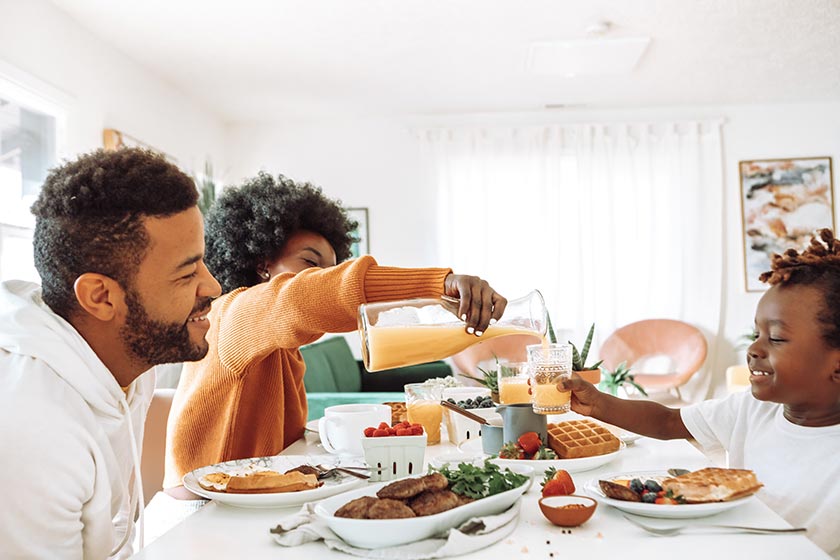
Try creating an atmosphere.
Particularly well suited for any food photographer that is working with a restaurant, in this case, we want the food and the scene around the food to share the spotlight. So, rather than simply shooting the food, we’re also capturing the atmosphere in which the food is served.
For instance, maybe a full spread of food is served on the table of a cozy booth in a warm and inviting restaurant. You can see people laughing, and clinking glasses; waiters are buzzing about with trays of food; there’s smoke in the air from the open kitchen. While we can’t necessarily see all the details of the food, the image is about more than just the food. It is also about the atmosphere in which the food is served, placing equal importance on both food and atmosphere.
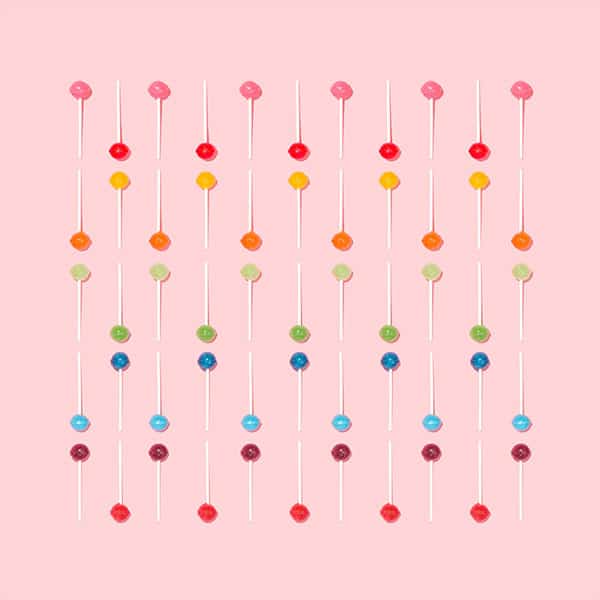
Create shapes and patterns with food.
The human eye loves symmetry, and food photography is a great chance for you to capitalize on that. This is especially true if you don’t have any restrictions in terms of the styling of your image. You can simply place the items of food in any order or pattern that you want. In fact, we’ve even seen some examples where people will intentionally change the shape of a food item so that all the items in the image match. For instance, making each item a perfect cube, and then lining up all the cubes in a pattern is an interesting way to play with food photography.
Play with point of view.
You don’t need to reinvent the wheel when trying to push the boundaries in your food photography. Perhaps all you really need to do is step back and consider taking your image from a point of view you’ve never considered. This can be as simple as taking your camera down to plate level, but it can also get as creative as shooting from below or even from a distance. When we shoot at different angles, it can completely change the scene and the perspective of the image.
Consider freezing your food.
And last but not least, if you’re really looking for that food photography idea that will help you push boundaries, why not try freezing your food?
This might be a little different than the hot, fresh food that you’re used to shooting, but if you’re looking for something different, this could be your chance.
To accomplish it, you’ll simply freeze your food in a tub of water, and then retrieve it from the freezer a couple of hours later. You’ll be left with the same food item you planned on shooting originally, but it will instead be housed in a block of ice for something unique and different.
Before shooting, remember to wet the ice slightly with warm water to remove the crystals and make the ice clear.
Use a different tone.
If you already have a style of food photography that you’re committed to, you may feel reluctant to start pushing boundaries with the ideas mentioned above.
We totally understand this. People may already know you for your style and your specialty. Having said that, just because you’ve established a style doesn’t mean you should never feel free to switch it up.
If you’re looking for a way to switch things up without stepping too far outside the box, why not try simply changing the tone of your images?
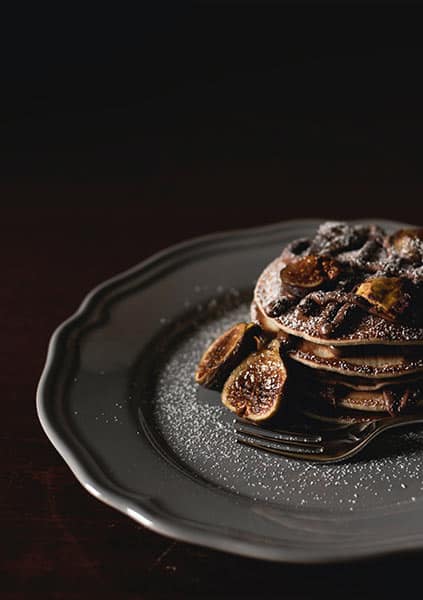
Moody food photography.
When you think of food photography, you’re probably naturally inclined to think of bright, vibrant colors. This makes sense since so much of what we think tastes good is based on how visually appealing something is.
Having said that, don’t fall into the trap of thinking that every picture you take needs to be bright and vibrant. Your food photography can also take on a darker and moodier tone. You can accomplish this by playing with lighting, of course, but you can also play around with props and styling. For instance, darker backdrops, plates, and directional light can help to create something that feels rich and moody.
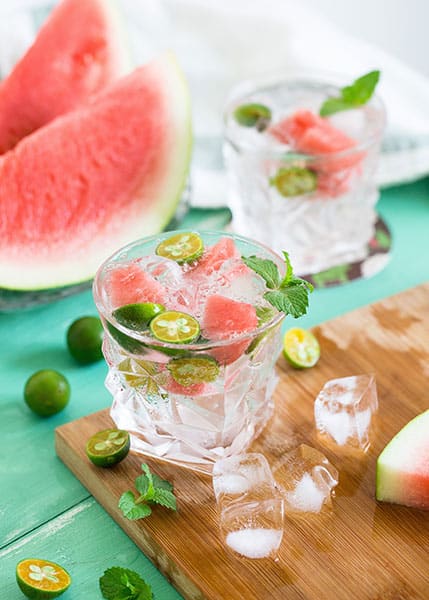
Light and airy food photography.
On the total opposite end of the spectrum, you should also feel free to give your images a lighter and more airy feel.
Once again, this can be accomplished by the scene and props you use, but we also encourage you to think about what kind of food you’re shooting when you’re coming up with the tone.
For instance, in this case, we’re going for a light and airy scene so perhaps a light vanilla cake would work well, or maybe a fresh smoothie would suit the scene.
Alternatively, as a photographer, you probably already know that juxtaposition tends to work well in photography, so feel free to intentionally style a light and airy scene with a food item that feels darker and denser.
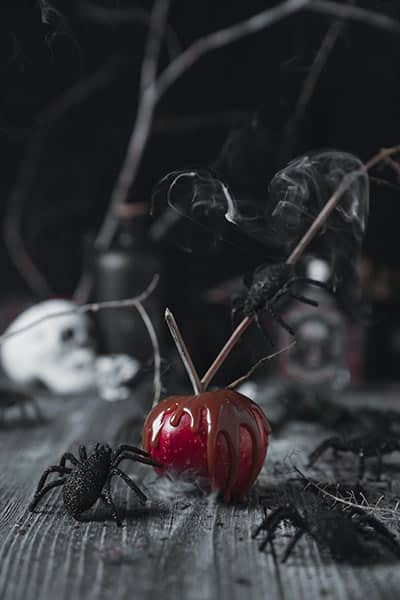
Dark, moody food photography.
We already gave you the idea to bring moody food photography to your work, but what about adding a dark element? While we often don’t think of food as being particularly dark or sinister, this idea is perfect if you’re looking for a way to surprise people with your work.
For instance, we’ve seen some photographers photograph rotten food, which really works well with the dark and moody feeling. While this might sound very unappealing on paper, we highly recommend looking up examples of photographers who shoot rotten food, and we think you’ll be pleasantly surprised by how interesting of a scene this can create.
Get in close.
In some instances, you really don’t have to change anything about your photography style or the types of food that you’re shooting. Instead, simply changing where you stand when you shoot could be all you need to do for a fresh take on your work.
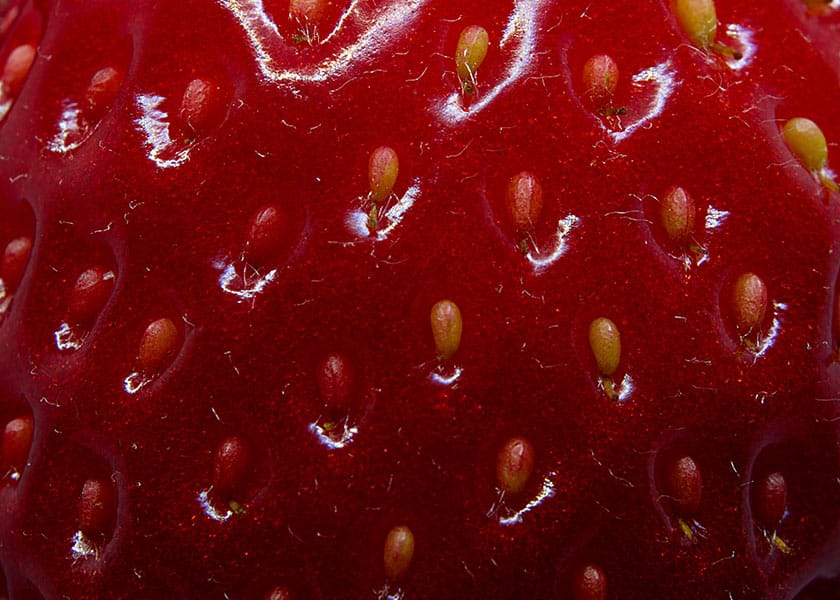
Macro food photography.
With macro food photography, our main goal is to capture as much detail as possible in one image. In most instances, this will mean getting up close and personal with the food and shooting using a macro lens to make your food look larger than life.
In some instances, this means shooting details of an entire dish, but it can also just be about shooting the details of a single ingredient or food item. For example, capturing the details of a piece of fruit like a raspberry or a kiwi.
The majority of the time the food will still be recognizable for what it is, but it should provide more detail than what the casual viewer would see when they simply glance at the food item. It may also cause the viewer to pause for a moment to think of what they’re looking at before they realize what it is.
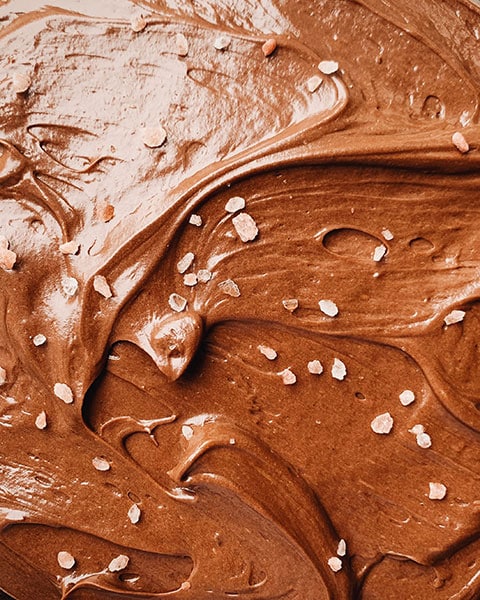
Food texture photography.
You will likely need to still use a macro lens for this style of food photography, but the difference here is that rather than simply getting up close with the food item, we’re also specifically focused on the texture of the item. In some cases, this might mean the item becomes unrecognizable until we zoom out.
For instance, an image that showcases the texture of a honeycomb, a bowl of noodles, or a bag of coffee beans.
Most often, these food texture photos won’t focus on entire dishes, instead, they will focus on single ingredients.
Shoot both extremes.
Can’t decide which photography style to shoot in? Why not try playing with multiple? As a creative food photographer, you don’t have to choose. You can have fun with both, showing off juxtaposition for a more interesting and memorable photo.
Alternatively, shoot both styles and then decide what you like best.
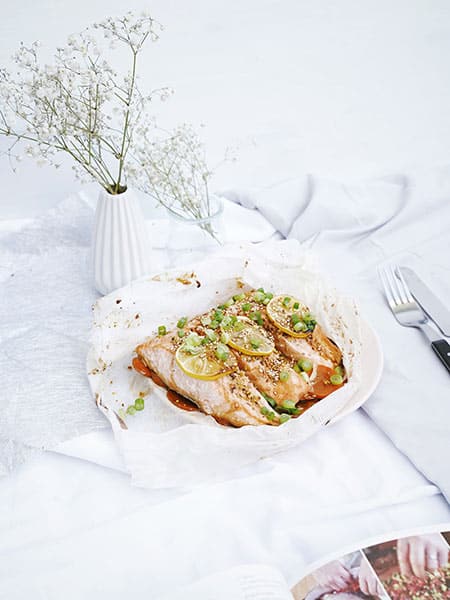
High key/low key food photography
High key food photography is all about that light and airy feeling. The backdrop is probably white, the surface being shot on is probably white, and most of the items in the scene are probably light in color as well.
Alternatively, low key food photography is all about capturing dark and moody images. For example, shadows are often the highlight along with dark backdrops, tables, and props.
Most photographers will probably find that they prefer shooting images in one style or the other. We recommend experimenting with both high and low key styles to help give you a better feel for what suits you best.
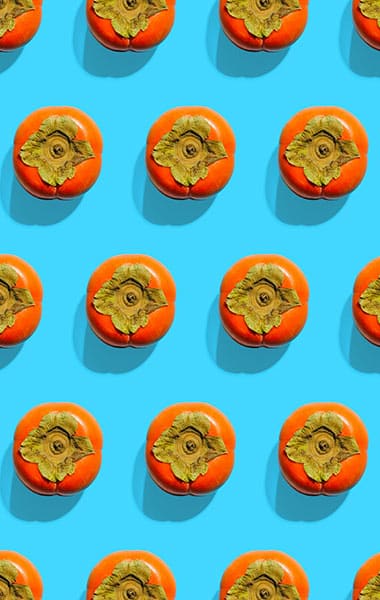
Flat lay food photography/dramatic angels
We’ve talked about flat lay food photography and how it is a very popular perspective for shooting food photography. The food items are shot from a bird’s eye view and you will most likely be able to easily identify what each food item is.
Alternatively, with dramatic angels, we’re getting a bit more experimental with our shots, shooting from angels that might not seem conventional and could even skew the image so that the food item is hard to recognize.
Playing with traditional flat lays and more dramatic food photography angles is a great way to experiment with your photography style without having to completely reinvent your aesthetic.
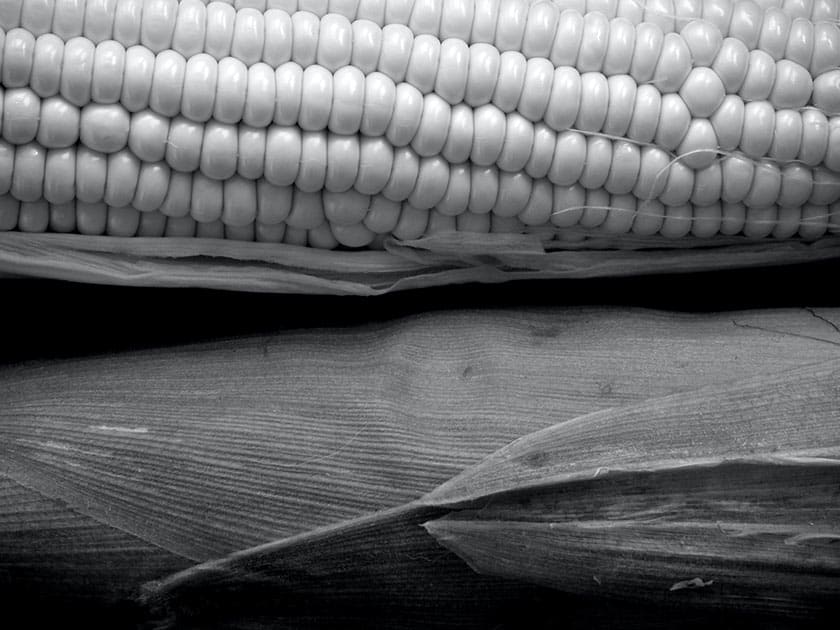
Black and white food photography/color
More often than not, we see food photographers using color in their photos. This is likely because the color is such a big part of what makes food so appealing and recognizable. Having said that, there is a time and a place for black and white food photography, and we highly recommend experimenting with it when the opportunity presents itself.
This tends to work well with items that are highly recognizable and don’t necessarily rely on color for identification. For instance, an Oreo cookie or a plate of cupcakes are both examples we’ve seen. There are so many stunning natural ingredients that you can photograph in black and white. Try arranging some asparagus on a surface with dramatic natural light for example, and highlight the textures, tones and shapes.
Build an online portfolio website you love.
Put your food photography in the spotlight.